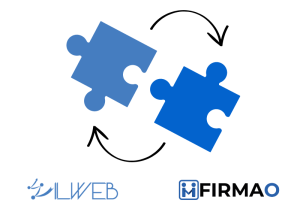
Enterprise Resource Planning (ERP) systems are a powerful tool for businesses looking to improve efficiency, streamline operations, and reduce costs. However, some businesses may be hesitant to invest in an ERP system, either due to the perceived cost or because they are unsure if they really need it. In this article, we will discuss three signals that indicate that it may be time for a business to invest in an ERP system.
Guide to Understanding Betting Odds at Canadian Sites
Are you ready to dive into the world of sports betting but find yourself puzzled by the myriad of odds displayed on Canadian betting sites? Understanding betting odds is a crucial step towards making informed decisions and maximizing your potential winnings. In this comprehensive guide, we will unravel the complexities of betting odds, demystify the jargon, and equip you with the knowledge needed to navigate the exciting realm of online sports betting in Canada.
From decimal odds to fractional odds, point spreads to moneylines, this article will serve as your roadmap to deciphering the language of sports betting odds. Whether you’re a seasoned bettor looking to sharpen your skills or a newcomer eager to place your first wager, we’ve got you covered. Get ready to enhance your betting experience, gain a competitive edge, and elevate your game with our Guide to Understanding Betting Odds at Canadian Sites.
Decoding Different Types of Betting Odds
When it comes to betting on sports at Canadian sites, understanding betting odds is crucial for making informed decisions. The three most common types of betting odds you’ll encounter are decimal, fractional, and American odds. Decimal odds are the most straightforward to understand, as they represent the amount you will receive for every unit wagered. For example, if the odds are 2.50, you would receive $2.50 for every $1 bet if your wager is successful.
On the other hand, fractional odds are more commonly used in the UK but can still be found on Canadian betting sites. These odds are displayed as a fraction, with the first number representing the potential profit and the second number indicating the stake. For instance, odds of 5/1 mean you would win $5 for every $1 bet. American odds, also known as moneyline odds, are prevalent in North America. Positive odds indicate the potential profit on a $100 bet, while negative odds show how much you need to bet to win $100.
It’s essential to compare odds across different Canadian betting sites to ensure you’re getting the best value for your bets. Understanding how to read and interpret betting odds will help you make more informed choices when placing wagers. By familiarizing yourself with the various types of odds and how they work, you can enhance your overall betting experience and potentially increase your chances of success.
Navigating Decimal, Fractional, and Moneyline Formats
When it comes to betting at Canadian sites, understanding betting odds is crucial to make informed decisions. This article aims to guide you through the basics of betting odds commonly used in Canada.
There are three main types of odds formats that you might encounter: decimal, fractional, and American (moneyline). Decimal odds are the most common format used in Canada, where the odds represent the amount you win for every $1 wagered. For example, if the odds are 2.00, you would double your money if your bet is successful.
On the other hand, fractional odds are displayed as a fraction, such as 2/1, indicating the potential profit relative to your stake. American odds, known as moneyline odds, are shown with a plus (+) or minus (-) sign. A plus sign indicates the amount you would win for a $100 bet, while a minus sign represents how much you need to stake to win $100.
Understanding these different odds formats will help you navigate Canadian betting sites more effectively and make well-informed decisions when placing your bets. Whether you prefer decimal, fractional, or American odds, grasping the fundamentals will enhance your overall betting experience.
Calculating Probability and Expected Value
When it comes to betting at Canadian sites, understanding betting odds is crucial for making informed decisions. Betting odds represent the probability of a particular outcome happening and the potential payout if that outcome occurs. There are three main types of odds used in sports betting: decimal, fractional, and American.
Decimal odds are the most commonly used format in Canada and are displayed as a decimal number, such as 2.00. This number represents the total amount that will be paid out for a winning bet, including the original stake. For example, if you bet $100 on odds of 2.00 and win, you would receive $200 – your original $100 stake plus $100 in winnings.
Fractional odds are another popular format, often seen as 2/1 or 5/2. The first number indicates the potential profit from a winning bet, while the second number represents the stake. So, for odds of 2/1, you would win $2 for every $1 bet if successful. American odds, also known as moneyline odds, are displayed with a plus or minus sign. A positive number shows the potential profit on a $100 bet, while a negative number indicates how much you need to bet to win $100.
By familiarizing yourself with these different types of odds, you can make more informed betting decisions at Canadian sites. Understanding how to read and interpret odds will help you calculate potential payouts and assess the likelihood of a certain outcome, ultimately enhancing your overall betting experience.
Tips for Making Informed Betting Decisions
When it comes to betting odds at Canadian sites, it’s essential to understand the different formats used. The three main types of odds you’ll encounter are decimal, fractional, and American. Decimal odds are the most common in Canada, where the odds represent the potential return on a 1 unit bet including the stake. For example, odds of 2.50 mean that a $1 bet would return $2.50 in profit plus the original $1 stake. Fractional odds are displayed as a fraction, such as 5/1, where the first number represents the potential profit and the second number indicates the stake. American odds, also known as moneyline odds, are displayed with either a plus or minus sign. A positive number shows the potential profit on a $100 bet, while a negative number indicates how much you need to bet to win $100.
Understanding how to read and interpret betting odds is crucial for making informed decisions when placing bets at Canadian sites. By familiarizing yourself with the different formats, you can calculate potential winnings and make comparisons between different odds more easily. Additionally, knowing how to convert between decimal, fractional, and American odds can help you navigate various betting markets and find value in your wagers. Whether you’re betting on sports, casino games, or other events, having a solid grasp of betting odds will enhance your overall betting experience and increase your chances of success.
Understanding betting odds is crucial for anyone looking to engage in sports betting at Canadian sites. By grasping the concepts of odds formats and probability, bettors can make more informed decisions and increase their chances of success. Whether you prefer fractional, decimal, or American odds, knowing how to interpret them will give you a competitive edge in the world of sports betting. So, next time you visit a Canadian betting site, remember to utilize your newfound knowledge of odds to enhance your overall betting experience and maximize your potential winnings.
- Lack of Data Integration: If a business is struggling with data integration, it may be time for an ERP system. Often, businesses have multiple systems in place to manage different aspects of their operations, such as accounting, inventory, and supply chain management. However, these systems may not be integrated, which can lead to inefficiencies and errors. An ERP system can help to integrate all of these systems, providing real-time visibility into all aspects of a business and allowing managers to make informed decisions based on accurate data.
- Manual Processes: If a business is still relying on manual processes, such as spreadsheets or paper-based systems, it may be time for an ERP system. Manual processes can be time-consuming, error-prone, and difficult to scale. An ERP system can automate these processes, reducing the risk of errors and freeing up employees to focus on more value-added tasks. Additionally, automation can lead to increased efficiency and reduced lead times, allowing businesses to better meet customer demands.
- Growth and Expansion: If a business is experiencing growth and expansion, it may be time for an ERP system. As a business grows, it can become more complex and difficult to manage with manual processes or disparate systems. An ERP system can help to streamline operations and improve efficiency, allowing businesses to scale more effectively. Additionally, an ERP system can provide the infrastructure necessary to support future growth and expansion.
In conclusion, if a business is struggling with data integration, manual processes, or experiencing growth and expansion, it may be time for an ERP system. While there may be some concerns about the cost and complexity of an ERP system, the benefits can often outweigh the investment, leading to increased profitability and growth over time. By investing in an ERP system, businesses can improve efficiency, streamline operations, and remain competitive in a rapidly changing marketplace.




